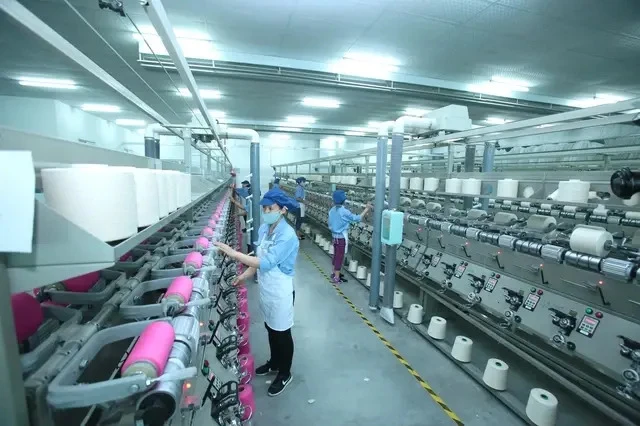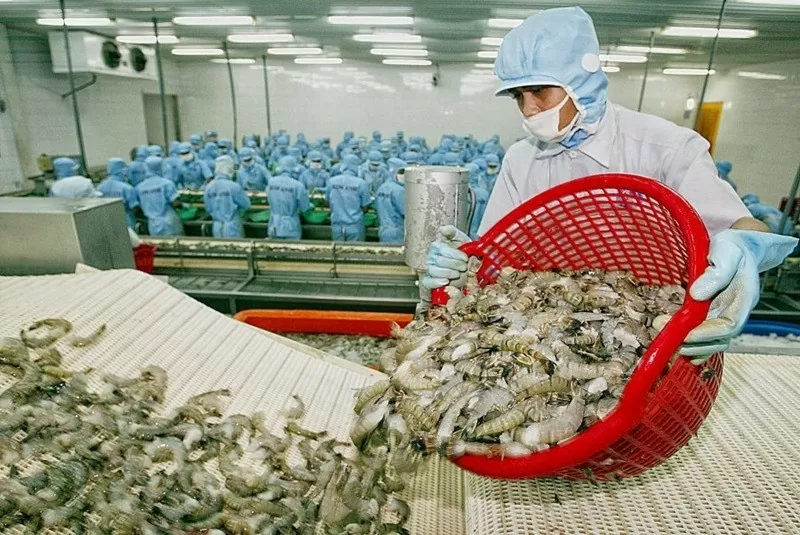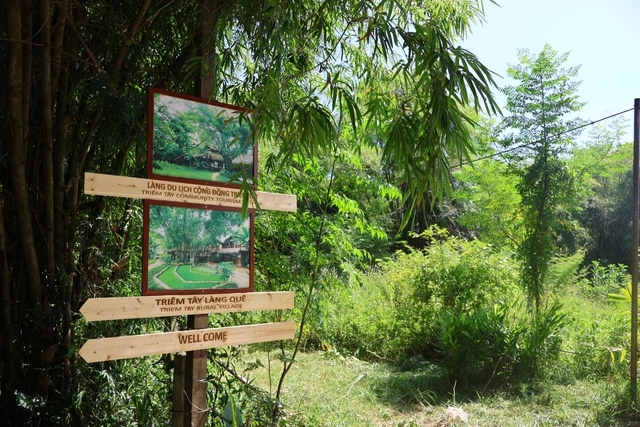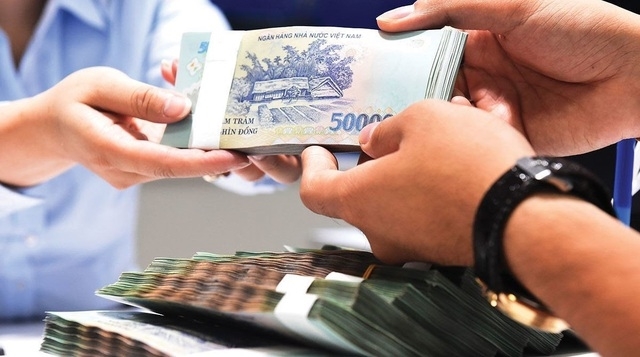 |
| Jasan dyeing factory, a wholly-owned Chinese facility in Hung Yen province. (Photo: thanhnien.vn) |
A prime example is the interest shown by Goldwind, a global leader in wind turbine manufacturing, in establishing a state-of-the-art wind turbine component manufacturing and assembly plant in the northern port city of Hai Phong. With over 47,000 turbines supplied and a total installed capacity exceeding 97 GW, Goldwind’s interest signals a significant boost for Vietnam's renewable energy sector.
The recent Hai Phong investment promotion conference in China’s Shenzhen city saw the awarding of seven new and expanded investment certificates to Chinese investors, totaling nearly 200 million USD. These investments span a range of industries, including solar panel production, electronic components, and automotive parts manufacturing. Additionally, the Hai Phong Economic Zone Authority (HEZA) also signed four memoranda of understanding with major Chinese investors.
Minister of Planning and Investment Nguyen Chi Dung highlighted a positive shift in Chinese investment toward hi-tech and green energy sectors, such as technology, electronics, manufacturing, infrastructure, renewable energy, and electric vehicles. This marks a departure from traditional investments in labour-intensive industries like furniture, steel, and apparel.
Notable projects from Chinese giants such as Goertek, BYD, Radian, Brotex, Wingtech, Deli, and Trina Solar have already established their presence in Vietnam, with investments ranging from millions to billions of USD.
Beyond investment, China remains Vietnam's largest market for agricultural products. According to the General Department of Vietnam Customs, two-way trade exceeded 100 billion USD for the first time in 2018 and soared to 171.2 billion USD in 2023, accounting for over 25% of Vietnam's total export-import turnover.
As many as 11 types of Vietnamese fruit, including mango, dragon fruit, and durian, are among the top exports to China, said General Secretary of the Vietnam Fruit and Vegetable Association Dang Phuc Nguyen.
Prof. Nguyen Mai, Chairman of the Association of Foreign Invested Enterprises (VAFIE), attributed Vietnam's appeal to its favourable geographic location, relatively low labour costs, affordable land rentals, and tax incentives. The availability of locally produced raw materials, which can be exported with added value, also further enhances Vietnam's attractiveness to Chinese investors, he said.
Vietnam’s shrimp exports to the EU enjoy positive growth
 |
|
Vietnam’s shrimp exports to the EU enjoy positive growth. (Photo: VNA)
|
As of July 15, Vietnam's shrimp exports to the EU market reached 241 million USD, up 14% over the same period last year.
The Vietnam Association of Seafood Exporters and Producers (VASEP) assessed that Vietnam’s shrimp exports to the EU began to record double-digit growth from April and maintained stable growth in May and June. Shrimp exports to the market are still affected by conflicts, economic and political fluctuations in the world, consumers’ frugal spending and rising prices.
As of July 15, Vietnam’s shrimp exports to the EU market reached 241 million USD, up 14% over the same period last year. In the EU, Germany, the Netherlands and Belgium are the three largest import markets. In particular, exports to the Netherlands and Belgium recorded double-digit growth of 19% and 21%, respectively, while exports to Germany rose by 9%.
In the EU market, Vietnamese shrimp has to compete strongly with Ecuadorian shrimp, which is cheaper, meets ASC standards and has lower transportation costs. Ecuador is still the largest shrimp supplier to the EU.
The EU market requires farmed shrimp to meet safety standards, with solutions to reduce emissions in farming and processing, detailed traceability and animal welfare. The EU’s shrimp import demand from July to the end of the year is forecast to continue to increase due to the EU’s stable economy, stable consumer prices and falling inflation. While traditional Vietnamese shrimp products face competitive pressure from other sources, value-added products are expected to grow better thanks to reduced inventories.
In the structure of shrimp exports to the EU in the first two quarters of 2024, whiteleg shrimp accounts for the largest proportion at 80.5%, black tiger shrimp accounts for 12.4%, and the rest are other types of shrimp. In the group of whiteleg shrimp and black tiger shrimp exported to this market, processed black tiger shrimp coded HS 16 recorded a decrease, while the remaining whiteleg shrimp and black tiger shrimp products enjoyed growth.
Major shrimp exporters to the EU include Minh Phu - Hau Giang, Nha Trang Seafoods - F17, and Thong Thuan. In the second quarter of 2024, average export price of whiteleg shrimp to the EU fluctuated from 7.2 to 7.4 USD per kg, while price of black tiger shrimp fluctuated from 8.6 to 10.3 USD per kg.
Quang Nam organizes Famtrip delegation to experience green tourism
The Quang Nam Department of Culture, Sports and Tourism on August 14 coordinated with the provincial Tourism Association and tourism businesses to organize a famtrip (Familiarition Trip) delegation to experience green tourism at three destinations: Hoi An city, Dien Ban town and Duy Xuyen district.
The famtrip aims to introduce and promote the potential of tourist attractions in Hoi An, Dien Ban and Duy Xuyen, to give consultation on building a program of agreement, companionship, and joint development of tourism in a green and sustainable direction.
 |
| The famtrip delegation visited the pottery workshop of artisan Le Duc Ha. (Photo: toquoc.vn) |
In Hoi An city, the delegation surveyed tourist attractions in Kim Bong carpentry village. The delegates experienced a number of activities aimed at the core values of “Countryside – Craft Village – River” and listened to an introduction to the history and culture of the craft village.
At Tra Nhieu community tourism village in Duy Xuyen district, the famtrip group experienced a basket boat ride in the coconut forest, heard stories about the countryside, rivers, historical stories and revolutionary soldiers.
In Dien Ban town, the famtrip group experienced the Terra Cotta Studio of artisan Le Duc Ha, the carpentry workshop of artisan Nguyen Van Tiep, the Triem Tay community tourism village and Triem Tay garden house eco-tourism area.
 |
| The Triem Tay community tourism village. (Photo: toquoc.vn) |
Mr. Le Quoc Viet, Chairman of the Quang Nam Destination Club, said that tourists almost only remember and are impressed with the tourism brands of Hoi An, My Son when they visit Quang Nam. Therefore, the tourism linkage between the three localities is an opportunity to link, promote and develop the Quang Nam tourism brand - green tourism.
“This is not only an opportunity for the three localities but also an opportunity to promote localities from the plains to the mountains of Quang Nam, forming tours connecting Hoi An with neighboring satellites like My Son, developing green tourism and Hoi An - Triem Tay - Tra Nhieu - My Son river tourism route, meeting the needs of developing new products for Quang Nam tourism, reducing overload pressure on Hoi An heritage,” Viet said.
HCM City disburses over VND306.4 trillion through bank-enterprise connection
Commercial banks in Ho Chi Minh (HCM) City disbursed more than VND306.4 trillion in the first seven months of the year, equivalent to 60% of the support package with a total amount of VND509.864 trillion registered by commercial banks since the beginning of the year at the city Bank-Enterprise Connection Program in 2024.
 |
| Photo for illustration. (Source: qdnd.vn) |
Accordingly, 97,138 customers who are enterprises, business households and cooperatives have received preferential loans through this program.
On August 14, Mr. Nguyen Duc Lenh, Deputy Director of the State Bank of Vietnam’s branch in HCM City said that as of the end of July 2024, the total outstanding credit balance in the city reached VND3.68 quadrillion, a slight decrease of 0.09 from the previous month but still up 11.47% compared to the same period last year.
Mr. Nguyen Duc Lenh also said that the socio-economic situation and production and business activities of enterprises, especially those in sectors and fields that are the driving force for economic growth, continue to maintain a positive growth trend and is an important environmental factor to maintain and promote credit growth.
According to the Deputy Director, credit in July 2024 in the southern city decreased slightly, mainly due to declines in short-term loans and foreign currency loans. Meanwhile, credit in Vietnam dong in the seven months soared by 13.52% compared to the same period last year.
Low interest rates, along with solutions to support businesses and good implementation of credit programs for priority sectors and fields, are the main factors affecting VND credit activities in the city in the seven months.
Regarding business support activities, by the end of July 2024, the city banking industry organized 26 conferences to connect banks and businesses and disbursed credit packages worth more than VND306.4 trillion, equivalent to 60% of the support package.
The move not only removes difficulties for businesses, but also offers solutions to promote credit growth in HCM City as a key task of the city’s banking industry in the last months of the year./.